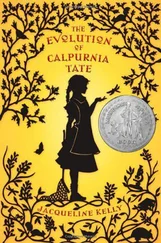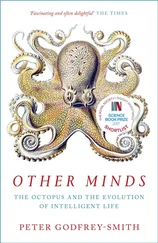Clearly, sex-role-reversal polyandry represents for the successful female the fulfillment of an evolutionary dream. She wins the battle of the sexes by passing on her genes to far more clutches of young than she could rear, alone or with one male's help. She can utilize nearly her full egg-laying potential, limited only by her ability to defeat other females in the quest for males willing to take over parental care. But how did this strategy evolve? Why did males of some shorebird species end up seemingly defeated in the battle of the sexes, as polyandrous co-“husbands,” when males of almost all other bird species avoided that fate or even reversed it to become polygynists?
The explanation depends on shorebirds' unusual reproductive biology. They lay only four eggs at a time, and the young are precocial, meaning that they hatch already covered with down, with their eyes open, and able to run and find food for themselves. The parent doesn't have to feed the chicks but only has to protect them and keep them warm. That's something a single parent can handle, whereas it takes two parents to feed the young of most other bird species.
But a chick that can run around as soon as it hatches has undergone more development inside the egg than the usual helpless chick. That requires an exceptionally large egg. (Take a look sometime at a pigeon's typically small eggs, which produce the usual helpless chicks, to understand why egg farmers prefer to rear chickens with big eggs and precocial chicks.) In Spotted Sandpipers, each egg weighs fully one-fifth as much as its mother; the whole four-egg clutch weighs an astonishing 80 percent of her weight. Although even monogamous shorebird females have evolved to be slightly larger than their mates, the effort of producing those huge eggs is still exhausting. That maternal effort gives the male both a short-term and a long-term advantage if he takes over the not too onerous responsibility of rearing the precocial chicks alone, thereby leaving his mate free to fatten herself up again.
His short-term advantage is that his mate thereby becomes capable of producing another clutch of eggs for him quickly, in case the first clutch is destroyed by a predator. That's a big advantage, because shorebirds nest on the ground and suffer horrendous losses of eggs and chicks. For example, in 1975 a single mink destroyed every nest in a population of Spotted Sandpipers that the ornithologist Lewis Oring was studying in Minnesota. A study of jacanas in Panama found that forty-four out of fifty-two nests failed.
Sparing his mate may also bring the male a long-term advantage. If she does not become exhausted in one breeding season, she is more likely to survive to the next season, when he can mate with her again. Like human couples, experienced bird couples that have worked out a harmonious relationship are more successful at raising young than are bird newly weds.
But generosity in anticipation of later repayment carries a risk, for male shorebirds as for humans. Once the male assumes sole parental responsibility, the road is clear for his mate to uso her free time in whatever way she chooses. Perhaps she'll choose to reciprocate and remain available to her mate, on the chance that her first clutch might be destroyed and he would require a replacement clutch. But she might also choose to pursue her own interests, seeking out some other male available immediately to receive her second clutch. If her first clutch survives and continues to occupy her former mate, her polyandrous strategy has thereby doubled her genetic output.
Naturally, other females will have the same idea, and all of them will find themselves in competition for a dwindling supply of males. As the breeding season progresses, most males become tied up with their first clutch and unable to accept further parental responsibilities. Although the numbers of adult males and females may be equal, the ratio of sexually available females to males rises as high as seven-to-one among breeding Spotted Sandpipers and Wilson's Phalaropes. Those cruel numbers are what drive sex-role reversal even further toward an extreme. Though females already had to be slightly larger than males in order to produce large eggs, they have evolved to become still larger in order to win the fights with other females. The female reduces her own parental care contribution further and woos the male rather than vice versa.
Thus, the distinctive features of shorebird biology— especially their precocial young, clutches of few but large eggs, ground-nesting habits, and severe losses from preda-tion-predispose them to male uniparental care and female emancipation or desertion. Granted, females of most shorebird species can't exploit those opportunities for polyandry. That's true, for instance, of most sandpipers of the high Arctic, where the very short breeding season leaves no time for a second clutch to be reared. Only among a minority of species, such as the tropical jacanas and southerly populations of Spotted Sandpipers, is polyandry frequent or routine. Though seemingly remote from human sexuality, shorebird sexuality is instructive because it illustrates the main message of this book: a species' sexuality is molded by other aspects of the species' biology. It's easier for us to acknowledge this conclusion about shorebirds, to which we don't apply moral standards, than about ourselves.
The remaining type of exception to the predominant pattern of male desertion occurs in species in which, like us, fertilization is internal but it's hard or impossible for a single parent to rear the young unassisted. A second parent may be required to gather food for the coparent or the young, tend the young while the coparent is off gathering food, defend a territory, or teach the young. In such species the female alone would not be able to feed and defend the young without the male's help. Deserting a fertilized mate to pursue other females would bring no evolutionary gain to a male if his offspring thereby died of starvation. Thus, self-interest may force the male to remain with his fertilized spouse, and vice versa.
That's the case with most of our familiar North American and European birds: males and females are monogamous, and they share in caring for the young. It's also approximately true for humans, as we know so well. Human single-parenthood is difficult enough, even in these days of supermarket shopping and babysitters for hire. In ancient hunter-gatherer days, a child orphaned by either its mother's or its father's death faced reduced chances of survival. The father as well as the mother desirous of passing on genes finds it a matter of self-interest to care for the child. Hence most men have provided food, protection, and housing for their spouse and kids. The result is our human social system of nominally monogamous married couples, or occasionally of harems of women committed to one affluent man. Essentially the same considerations apply to gorillas, gibbons, and the other minority mammals practicing male parental care.
Yet that familiar arrangement of coparenthood does not end the battle of the sexes. It does not necessarily dissolve the tension between the mother's and father's interests, arising from their unequal investments before birth. Even among those mammal and bird species that provide paternal care, males try to see how little care they can get away with and still have the offspring survive owing mainly to the mother's efforts. Males also try to impregnate other males' mates, leaving the unfortunate cuckolded male to care unknowingly for the cuckolder's offspring. Males become justifiably paranoid about their mates' behavior.
An intensively studied and fairly typical example of those built-in tensions of coparenthood is the European bird species known as the Pied Flycatcher. Most flycatcher males are nominally monogamous, but many try to be polygynous, and quite a few succeed. Again, it is instructive to devote a few pages of this book on human sexuality to another example involving birds, because (as we'll see) the behavior of some birds is strikingly like that of humans but does not arouse the same moral indignation in us.
Читать дальше











